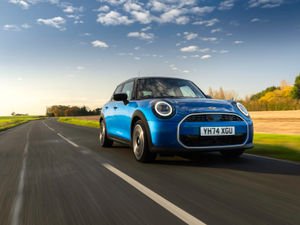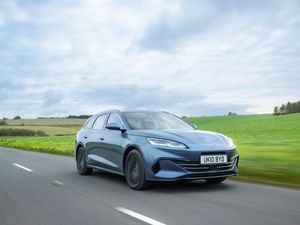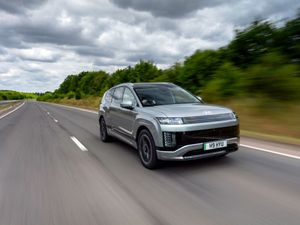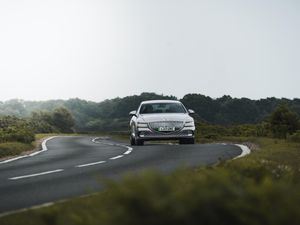First Drive: Can MG break into the SUV mainstream with the new HS?
MG’s largest car yet is here, but is it going to break into a competitive market? Jack Healy finds out…
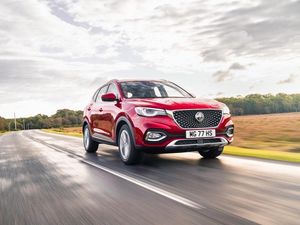
What is it?
Despite being resurrected by the Chinese firm SAIC Motor in 2007, MG has been out of the limelight in terms of new cars and, as of this summer, only three cars were on sale in the UK – the 3 supermini, the ZS compact crossover and its electric alternative.
But MG is looking to establish itself further in the popular crossover market, this time targeting the likes of the best-selling Nissan Qashqai and Kia Sportage with its new machine — the HS. Now the largest MG currently on sale, how does it perform on the whole? We find out…

What’s new?
The HS is generally a large step-up in quality for MG, as the firm looks to tackle the more established options on the market. Featuring more premium materials and better technology, the HS is aiming to undercut its rivals by being more affordable, but still offering the same amount of equipment.
A notable addition, following its introduction on the ZS EV, is MG’s ‘Pilot’ safety assist tech. Other features include the panoramic sunroof that also debuted on the ZS EV, while a 10.1-inch touchscreen display is as standard across all trims – which offers Apple CarPlay and Android Auto.
What’s under the bonnet?
For all HS models, MG fits a 1.5-litre four-cylinder turbocharged petrol engine developing 160bhp and 250Nm of torque. With all the power directed to the front wheels, customers can choose from a six-speed manual or a seven-speed dual-clutch transmission, with the HS capable of 0-60mph in 9.7 seconds.
Although the engine is rather quiet while on the go, its power delivery low in the rev range is poor – with it only truly kicking in over 2,000rpm. Here it’s paired to the six-speed manual, which MG expects to take the edge in terms of popularity. It’s not the smoothest transmission, though good enough to make for steady progress.
Opt for the manual option, and the 1.5-litre petrol returns fuel economy of 37.2mpg and emissions of 148g/km CO2 – while the DCT option is 36.2mpg and 157g/km CO2 in emissions.

What’s it like to drive?
By all accounts, the HS is not a bad car to drive. The steering is less involving than most rivals, but it’s direct enough. That being said, you have to turn the wheel a fair amount before the wheels respond. It doesn’t feel too large on the road, and the lighter steering makes driving on tighter streets simple. All-around visibility is good too, with large windows making for easy views out.
But the overriding feeling is the poor ride, with pretty much all imperfections in the road felt behind the wheel. With the lack of body roll, the suspension clearly leans on the harder side, while the large 18-inch alloy wheels certainly don’t help matters, making it quite uncomfortable.

How does it look?
MG has added the largest version of its signature grille design to the HS and it suits the model rather well. With plenty of metallic detailing used, the car looks more premium than its price tag would suggest and although it’s not the sharpest-looking model around, it is quite handsome.
With roof rails, large alloy wheels and additional metal detailing at the rear, the HS in Exclusive spec as tested here is not bad to look at by any means, and we’d say is MG’s best-looking effort to date. In terms of its rivals though, the Mazda CX-5 is a stand-out model and the HS isn’t as appealing as the angular Nissan Qashqai either.

What’s it like inside?
The Chinese-owned firm has certainly made a step up in terms of interior quality with the HS. With soft-touch materials throughout the cabin, it feels like a good place to be – though scratchier plastics aren’t hard to find. It was easy to find the right driving position also, with the electrically-adjustable sport seat and steering column allowing for height and reach adjustment. The new 10.1-inch touchscreen, which comes as standard, is clear and easy to use, and is where all the car’s settings are available.
In terms of rear space, the HS is very accommodating, with even taller drivers allowing for plenty of legroom in the back. Headroom isn’t encroached by the panoramic roof either, which allows for a light and airy cabin. The 463-litre boot space is one of the best in class, though has quite a high lip. Its capacity extends to 1,454 litres when the rear seats are folded down.

What’s the spec like?
In order to make the HS much closer to rivals in terms of quality, it comes with a decent level of equipment as standard. With 17-inch alloy wheels, keyless entry with push-button start, a 10.1-inch touchscreen infotainment setup and heated electric-folding wing mirrors all as standard, the entry Explore option is surprisingly well-equipped for the £17,995 entry price.
We got behind the wheel of the top-spec Exclusive model, which at £22,995 comes with two leather interior options, electrically adjustable heated sports front seats, dual-zone climate control and a panoramic sunroof – with the mid-level Excite adding a rear parking camera, 18-inch alloys and rain-sensing wipers. MG also offers its seven-year warranty on the HS, too.

Verdict
There is a lot to like about the MG HS. The high level of equipment throughout the range, interior space and easy to drive nature help to make the budget SUV a strong alternative in the crowded crossover market. The pricing of the entry-level model is also very compelling, undercutting many of the market’s best at £17,995.
But the ride on the Exclusive model is far from class-leading with even the smallest bumps and cracks in the road transferred into the cockpit. That made the driving experience below par for the crossover market. Overall, the MG HS is certainly a step-up for MG, but it isn’t quite on the same level as its rivals.


